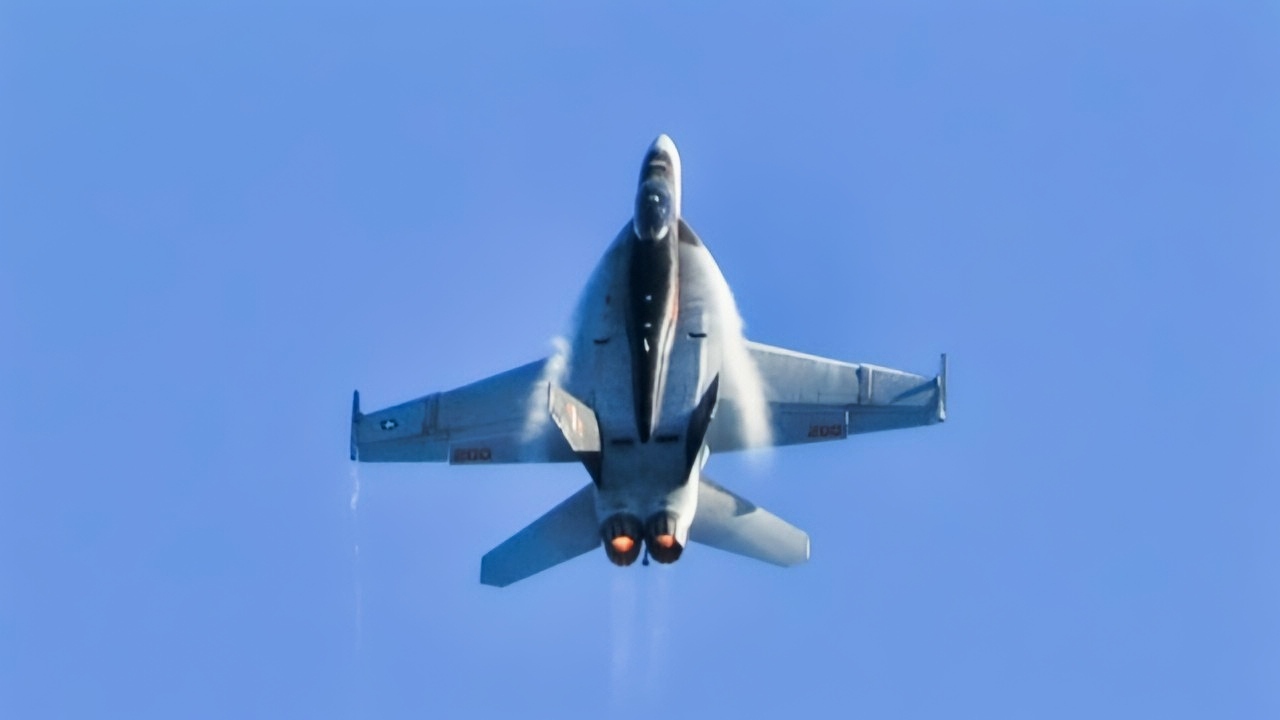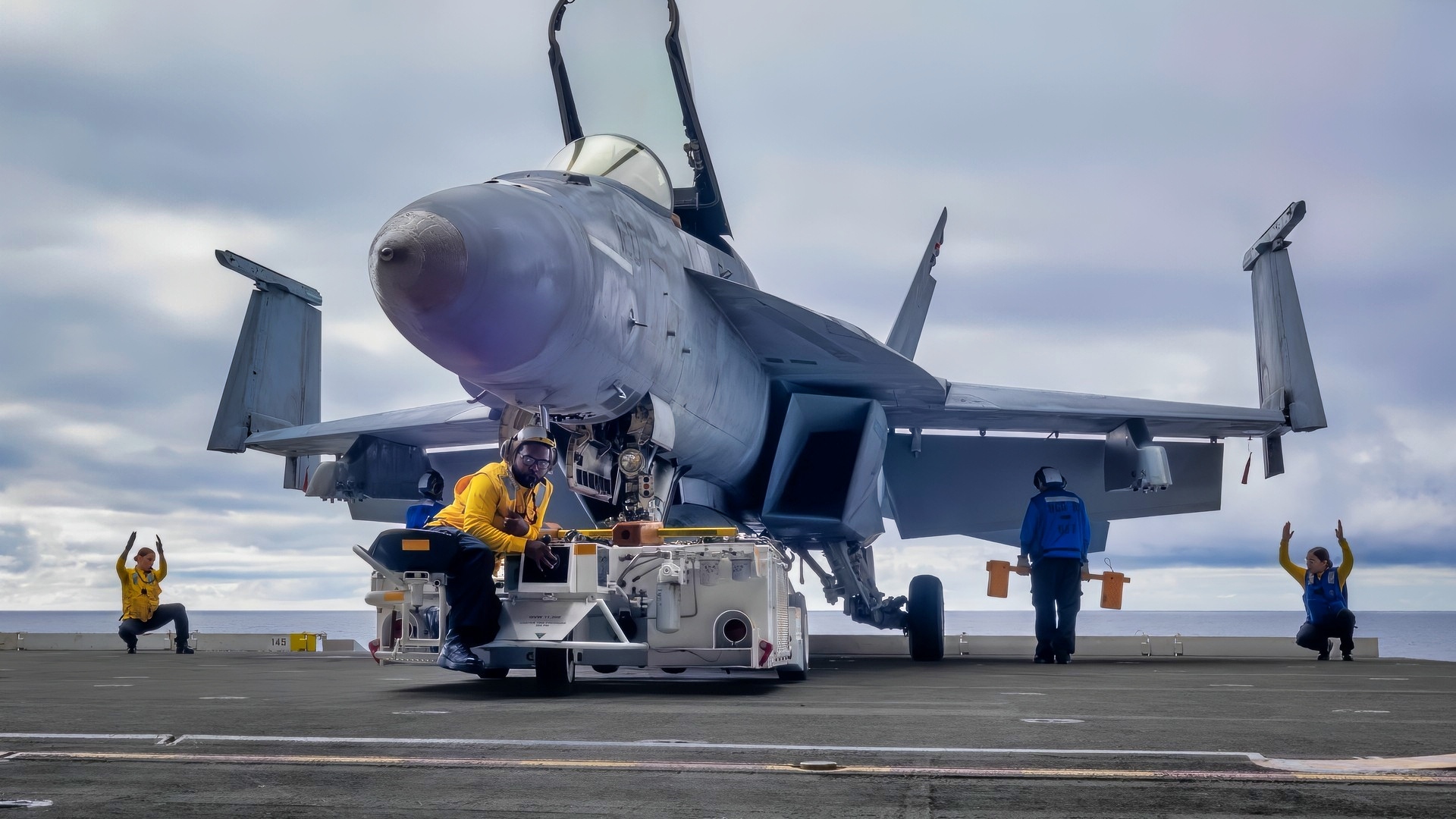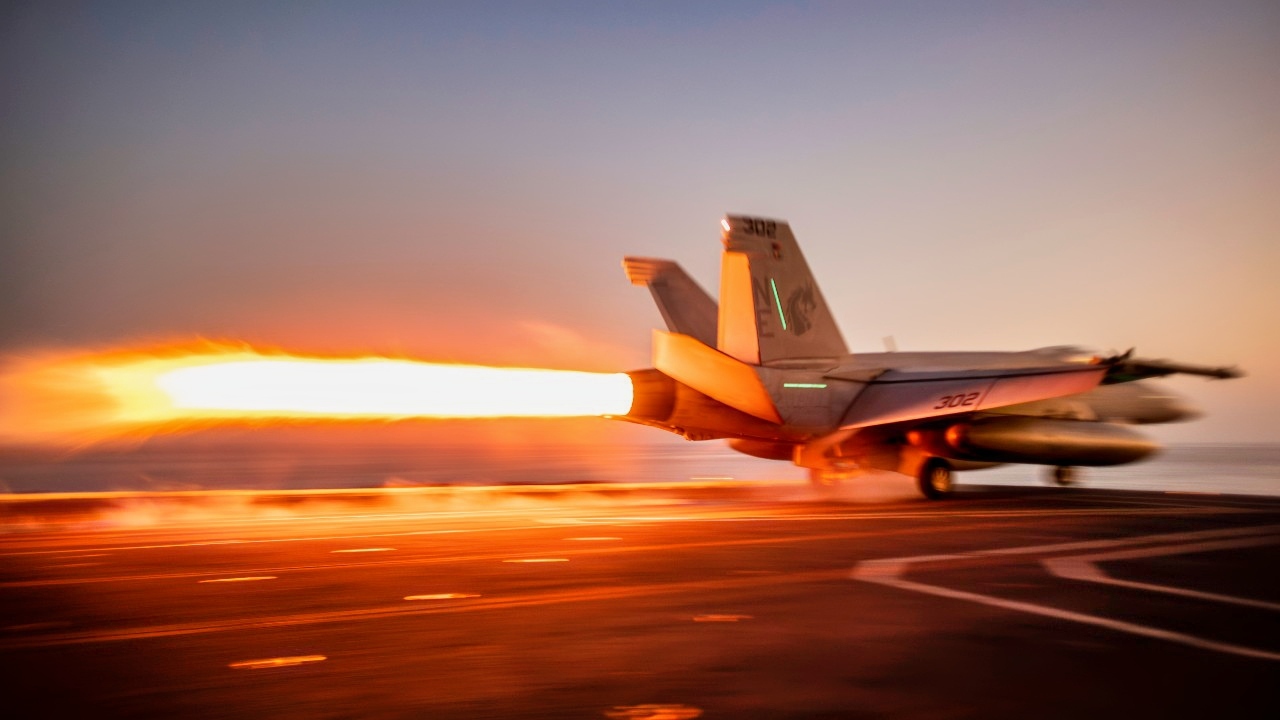Key Points and Summary – A recent GAO report warns of a “Hollow Military 2.0” crisis, revealing U.S. Navy crews are forced to “cannibalize” various platforms for spare parts.
-This practice serves as a workaround for chronic shortages resulting from “just-in-time” logistics and limited sourcing from manufacturers.

A U.S. Navy F/A-18E Super Hornet aircraft assigned to Strike Fighter Squadron (VFA) 147 performs maneuvers above the aircraft carrier USS Nimitz (CVN 68) during the departure of Carrier Air Wing (CVW) 11 Dec. 10, 2013, in the Pacific Ocean. CVW-11 fixed wing aircraft flew off the Nimitz to return home after being deployed to the U.S. 5th, 6th and 7th Fleet areas of responsibility. (U.S. Navy photo by Mass Communication Specialist Seaman Apprentice Kelly M. Agee/Released)
-The problem is worsened by a lack of government-owned technical data rights, which often prevents sailors from performing their own repairs.
-This situation increases costs and workloads, leading to a dangerous decline in the number of mission-ready ships and aircraft across the fleet.
The Navy Is Now Forced Into Cannibalizing Fighters and Submarines
WARSAW, POLAND – What was that one (one of many) famous paradoxical sayings of baseball’s Yogi Berra? “It’s déjà vu all over again.”
If he were here today, he would probably say that about the US military’s lack of spare parts that are needed to maintain some of its most important platforms.
There is an unhappy history that is repeating itself – specifically, the “hollow military” of the Jimmy Carter administration.
During this time, US military maintenance personnel were responsible for maintaining tanks, aircraft, ships, and other equipment.
However, they also lacked spare parts to maintain them, fuel to put them through their paces, and ammunition for any live-fire exercises.
Critics of the current state of affairs within the armed services charge that we are living in a period of “Hollow Military 2.0.”
This accusation is supported by a recent US Government report that details how US Navy maintenance crews are experiencing parts shortages and are resorting to stripping down their own jets and submarines for spares.
Phrases like “hangar queens”, which are not supposed to exist according to several regulations enacted in past decades, are starting to be heard more frequently.
Maintenance crews servicing US Navy F/A-18 fighter aircraft are reportedly being reduced to stripping radio cables from some aircraft to repair others.

ATLANTIC OCEAN (Aug. 13, 2025) Sailors transport an F/A-18E Super Hornet attached to the “Gladiators” of Strike Fighter Squadron (VFA) 106 onto an aircraft elevator aboard the Nimitz-class aircraft carrier USS George H.W. Bush (CVN 77). George H.W. Bush is underway conducting carrier qualifications and routine operations in the Atlantic Ocean. (U.S. Navy photo by Mass Communication Specialist Seaman Apprentice Kayleigh Tucker)
The culprit is another case of – as one former US defense industry colleague said to me recently – “blame it on the Japanese. It is our slavish obedience to their ‘just in time’ system of providing inputs to production or the spares needed to maintain weapon systems in service in accordance with a specific set of timelines that got us to this point.”
US Navy technicians have also been forced to cannibalize submarines and fighter jets for a variety of spare parts, allowing those spares to be used for the repair of other aircraft and submarines, according to the same US Government report.
The document details that in more than one instance, technicians repairing a Navy fighter aircraft were unable to service a radio because the necessary cables for the job were only available from the original equipment manufacturer (OEM).
Those cables were not available because they could only be provided “on the schedule” of the OEM.
It’s 1977 Again
“Only that vendor can make the part, and generally, repairs to that part are made on the OEM’s schedule,” reads that part of the report from the Government Accountability Office, which was released late last month.
“Officials considered reverse-engineering the part or contracting to stock spare parts, but determined both options would be too costly,” the report found. Maintenance teams have therefore resorted to cannibalizing grounded aircraft for the parts they require.
The GAO also found that the government customers’ limited intellectual property and data rights, combined with delays in part availability, created a situation where technicians were forced to improvise.
Methods they devised frequently again included cannibalizing equipment to maintain a mission-ready status for certain vehicles.
The GAO discovered the Department of War did not thoroughly review the data rights it extended to companies under specific categories of intellectual property rights.
This is one of the most prevalent issues in maintaining weapons systems.
The GAO team examined five Navy contracts to assess any problems with maintaining the systems purchased under them.
These are the F/A-18 and F-35 fighter jets, littoral combat ships, the Stryker Combat Vehicle, and the Virginia-class attack submarines.

An F/A-18C Hornet, assigned to the “Stingers” of Strike Fighter Squadron 113, transits over the haze of southern Afghanistan. VFA 113, part of Carrier Air Wing 14 aboard the aircraft carrier USS Ronald Reagan is supporting Operation Enduring Freedom. The mission of CVW 14 is to protect the people of Afghanistan and to support coalition forces. Ronald Reagan is currently deployed to the U.S. 5th Fleet area of operations. Operations in the U.S. 5th Fleet area of operations are focused on reassuring regional partners of the United States’ commitment to security, which promotes stability and global prosperity.
The watchdog found that Navy mechanics and crews were subjected to chronic delays almost entirely due to a shortage of spare parts.
Those shortages were, in turn, due to limited sourcing options.
“Cannibalization has several adverse impacts, including increasing maintenance costs and workload, and when overused, long-term adverse effects on aircraft availability,” the report reads.
Navy maintenance personnel were also cannibalizing parts from other submarines to use for repairing Virginia-class submarines.
This was again a workaround to avoid delaying repair orders while waiting for spares to be delivered from manufacturers.
Data Rights Limitations
Other problems with the maintenance regime were reported to include a lack of technical data being available.
This was the case with the F-35 program, which prevented the Navy maintenance crew from making repairs.
The GAO discovered that “depot-level maintainers may not have data rights that allow government personnel to make repairs without support from, or contracting with,” the OEMs.
This makes the repair process dependent upon bringing in outside contractors to handle technical faults.

Members of the US Navy F/A-18F Super Hornet Demo Team performs a maneuver at the Wings Over South Texas Air Show. This year’s air show marks the first return of Wings Over South Texas to Naval Air Station Corpus Christi since 2019.
Sometimes this can be carried out in port, but on other occasions it has required flying contractors to ships while they are at sea, at considerable expense.
As the GAO found, the Navy has developed several workarounds to address the shortage of available materiel and intellectual property rights.
Their solutions have ranged from stocking up on long-lead materials to prevent shortages on site (which undermines the whole “just in time” model) to requesting certain data rights in follow-up contracts with their suppliers.
The report’s findings come as the Navy, along with other parts of the military, are advocating for the “right to repair.”
Currently, service members must contend with warranties and other intellectual property matters, as well as the shortage of both available parts and up-to-date technical manuals.
Ultimately, this means that an increasingly smaller number of platforms are officially listed as mission-ready.
About the Author: Reuben F. Johnson
Reuben F. Johnson has thirty-six years of experience analyzing and reporting on foreign weapons systems, defense technologies, and international arms export policy. Johnson is the Director of the Asia Research Centre at the Casimir Pulaski Foundation. He is also a survivor of the Russian invasion of Ukraine in February 2022. He worked for years in the American defense industry as a foreign technology analyst and later as a consultant for the U.S. Department of Defense, the Departments of the Navy and Air Force, and the governments of the United Kingdom and Australia. In 2022-2023, he won two awards in a row for his defense reporting. He holds a bachelor’s degree from DePauw University and a master’s degree from Miami University in Ohio, specializing in Soviet and Russian studies. He lives in Warsaw.
More Military
China Has a Three-Word-Plan to Sink Aircraft Carriers
The Sneaky Reason China Wants a Big Fleet of Aircraft Carriers
USS Kentucky: The ‘Lost’ U.S. Navy Iowa-Class Battleship That Was Never Finished
China’s J-20 Stealth Fighter Simply Summed Up In Just 1 Word
F-22 Raptor vs. China’s New J-35 Fighter: Why You Might Not Like the Answer










